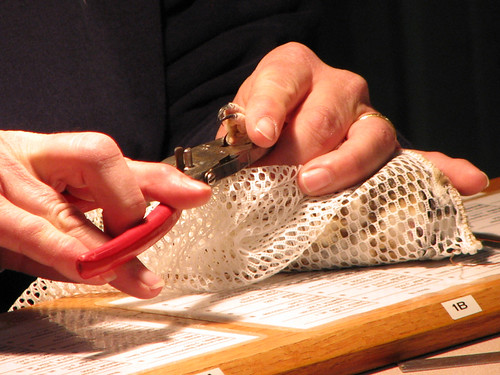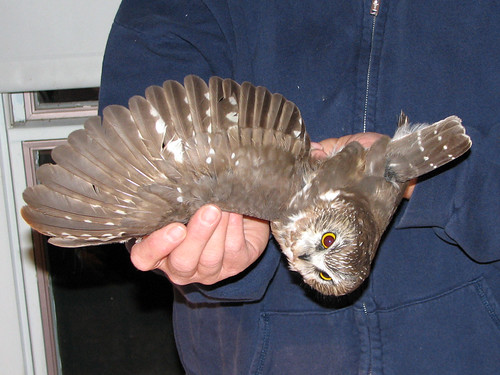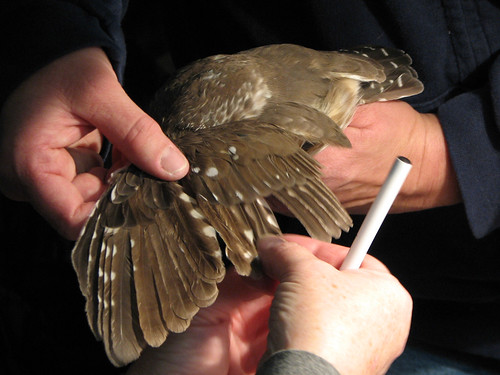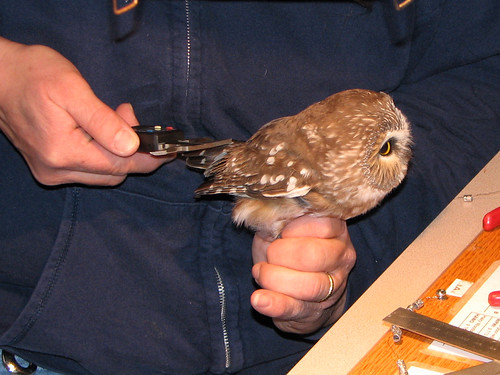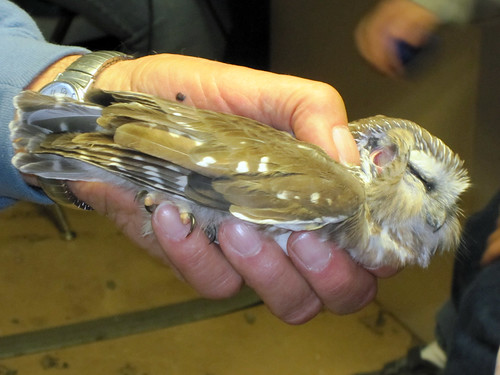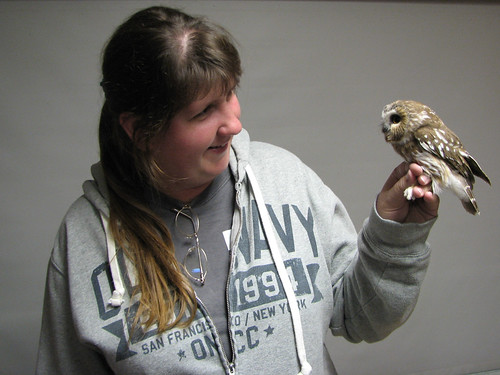Saw-whet Owl banding @ Sand Bluff
Last Saturday night Arthur and I visited the Sand Bluff Bird Observatory in Durand, Illinois. The banding station is open each weekend during spring and fall migration, and they band a huge number of birds – up to 4,000 per year. The station has been in operation since 1967 and has always been run by a team of dedicated volunteers. Visitors are welcome to observe songbird banding activities, which takes place during the day. Our visit on Saturday night was to see a special, nocturnal bird: the Saw-whet Owl.
Northern Saw-whet Owls are small owls that winter in our region (there have been a few records of breeding Saw-whets in Lake and Winnebago Counties). The birds are banded during migration, when they are lured into mist nets using recordings of Saw-whet Owl calls. The data gathered through banding helps us understand more about these tiny nocturnal owls.
As in other bird banding work, data such as sex, age and condition are measured each time a Saw-whet Owl is captured and banded. Saw-whets can be sexed by comparing measurements like wing chord (the length of an extended, relaxed wing) and weight. Age can be determined by examining the plumage and molt pattern.
The program began with Sand Bluff Master Bander and founder Lee Johnson telling us about the banding station and their work. Since no Saw-whet Owls were found during the first evening net-run, Lee took some time to show us a few of the songbirds that were still being processed at the end of the day. Here he’s showing a Hermit Thrush. Of the thrushes that migrate through the area, Hermits are usually the first to arrive in the spring and the last to fly through in the fall.
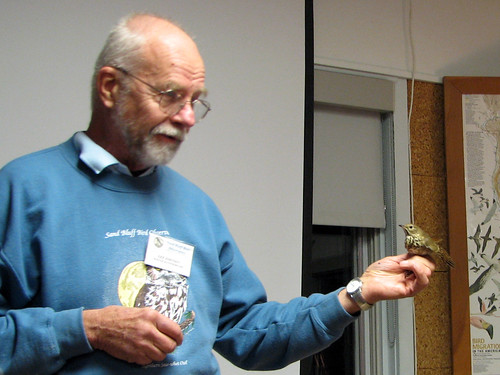
SBBO Master Bander Lee Johnson with a Hermit Thrush
It was great to see these little birds, which included a Fox Sparrow and a fiesty Field Sparrow besides the Hermit Thrush. But it did come as a relief when a Saw-whet Owl was found in the nets on the second run of the evening. Notice the high-pitched tooting in the videos – that’s the recorded call of the Saw-whet.
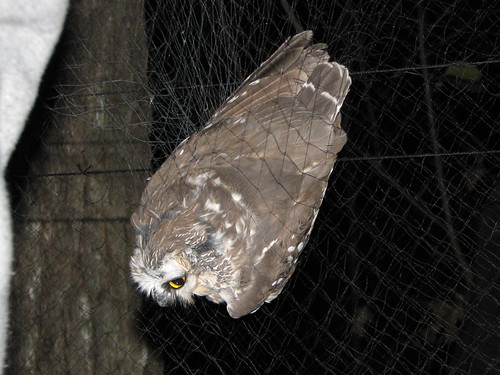
A Saw-whet Owl in the mist net
Removing the owl from the mist net
Putting the Saw-whet Owl into the mesh bag
In all, three birds were captured in the nets during the evening. After an owl was removed from the net, it was brought back to the banding station building in a mesh bag. The bird remains in the bag during the banding process.
The main reason for this is to protect the bander’s hands from these:
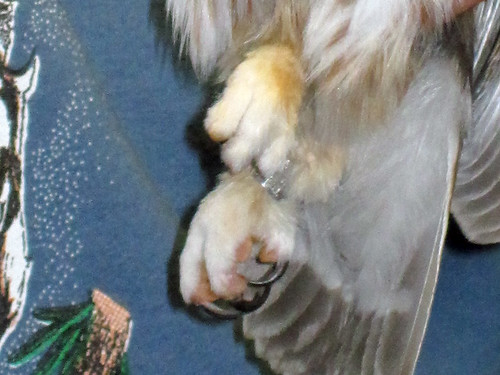
Sharp and deadly to prey! Saw-whet Owl talons
After banding, the bird is examined and measured, and the data is recorded. The wing feathers are even examined under a black light to help determine the bird’s age.
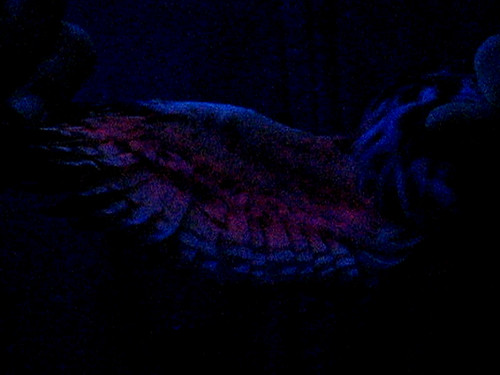
Viewing the plumage under black light; the uniform pink indicates a juvenile bird
Saw-whet Owls are extremely docile in the hand, which adds to their already high cuteness factor. Did you notice how calm the bird was in the two video clips above? After data was taken on each bird, visitors were able to have a closer look. Here, Lee shows us the large ear opening of a Saw-whet Owl.
The birds also appear to enjoy having the backs of their heads stroked, as you can see in this short clip.
A Saw-whet enjoys a pet
Earlier in the evening, Lee had asked each visitor to introduce him/herself and tell the group his/her reason for visiting. As an introvert I admit I dread such moments, but I mentioned volunteering at the MAPS banding station at Rollins this summer. While the Sand Bluff volunteers were out on the third and final net-run of the night, Arthur and I remained behind and spoke with Lee about the MAPS work at Rollins and he told us quite a few fun banding anecdotes as we waited. It was really a treat to hear stories from someone with so much experience as a birder and bird bander.
After the third bird of the evening was banded, the few of us that remained were able to hold the bird, if we wished.
The Sand Bluff Bird Observatory will have another Owl Night this Saturday, October 23rd. I highly recommend it!
I took more photos during the evening besides the ones shared in this post; you can find them here: Amy’s Saw-whet Owl banding photos.

